About Turtles
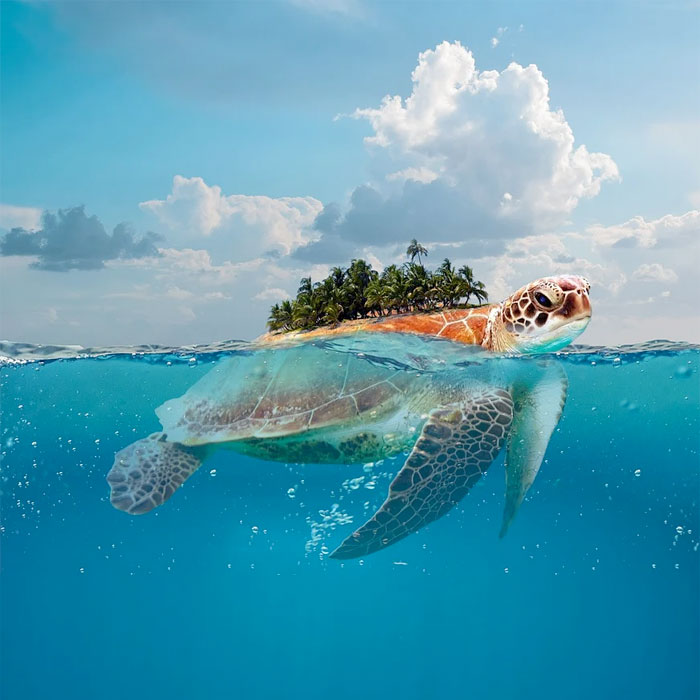
1. Turtle island.
Turtle myths abound in creation stories throughout the world. The Hindus tell of a great flood that dissolves all life until it is resurrected on the back of a turtle. In China, it is one of the four animals that govern the four points of the compass. The Iroquois, Anishinaabe and Ojibwa have a similar story of a great flood that destroyed earth: A number of the surviving animals attempted to rescue it by diving to the bottom of the water in search of some soil. All failed until a muskrat managed to return to the surface dead, but with a lump of earth in his paw. Turtle offered his back to rest it on and it grew to be North America. Some people call North America Turtle Island.

2. The secret of eternal life.
Unlike the rest of the animal kingdom, the organs of turtles do not age. Their liver, lungs and kidneys are just as good at 100 as they were at one day old. (Lobsters hold the same secret under their shells). This ability to withstand the rigours of life without aging is called negligible senescence. If we could breed this trait into humans, we could live to be a dozen centuries old.
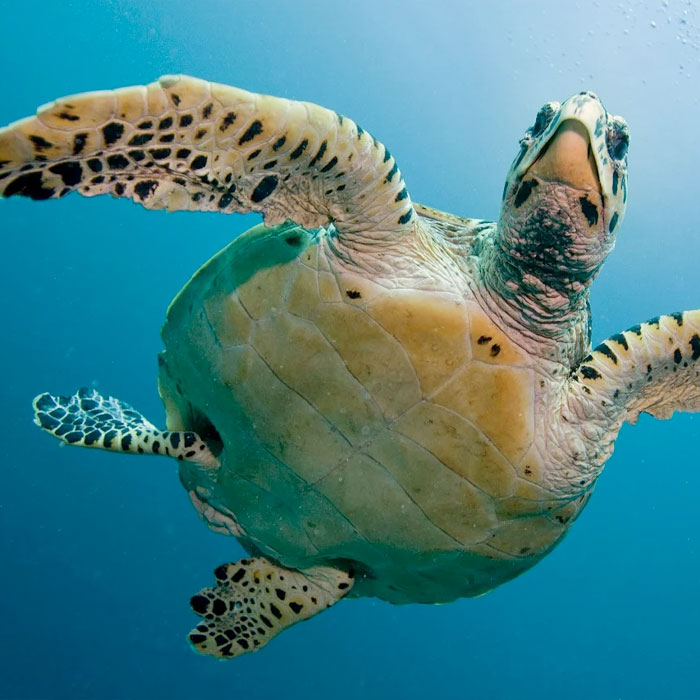
3. Turtle parts and predictions.
Most of you smart readers know that a turtle shell is called a carapace, but how many of you know that the bottom shell is called a plastron? Some people believe that the plastron contains a map of the universe. It was also used in divination to discover what the future held in store. Furthermore, the Chinese thought that the turtle encapsulated the order of the cosmos with the carapace representing the dome of heaven and the plastron the flat earth. The moving four feet represented the four seasons.

4. Abandoned turtle parts.
There is no way a turtle can escape its shell, it being connected to the plastron by means of bony structures called bridges. As well, its ribs and backbone are connected to its inner shell. But it is true that the it moults as it grows, sloughing of bits of its carapace, which is arranged in connected plates, in plastic-like sheets.

5. Snapping turtles.
Snapping turtles, and their subspecies, painted turtles, occupy much of south-eastern and mid-western Canada. Snapping turtles are the country’s largest freshwater turtles, measuring 1 to 1.5 feet long and twice as long when measured from extended neck to tip of tail. They overwinter under shallow water in lakes or in mud holes, entering a state of torpor where they need very little oxygen, which they absorb through their skin. They don’t often venture on land because they are quite vulnerable since they cannot withdraw their heads into their shells, but simply move it from side to side, snapping at all threats.
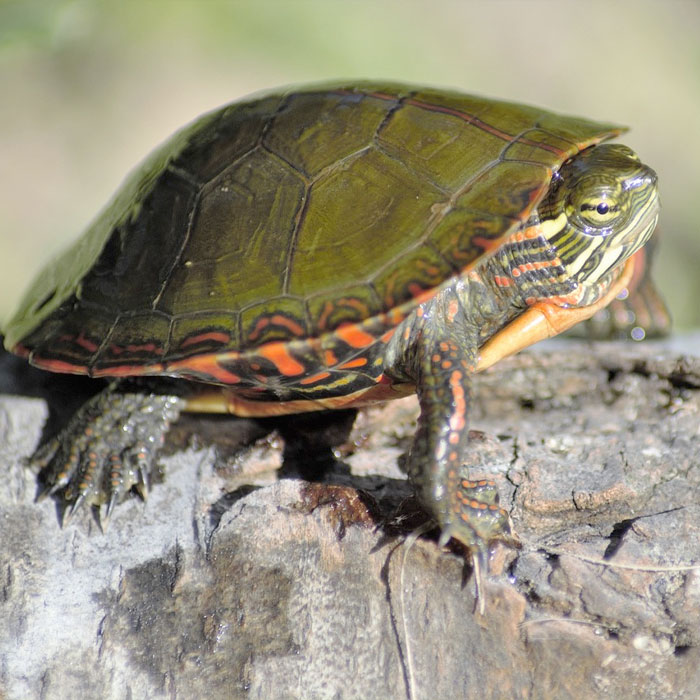
6. Painted Turtles.
The most abundant kind in North America, at just under a foot in length, painted turtles are olive green to brown with a cream to reddish plastron, decorated with a bold pattern. Their legs are brown or black with bright yellow stripes. These guys love to crawl out of the water to bask on a sunny rock and warm up early in the morning, dipping and basking alternately throughout the day. Leathery eggs laid in June hatch in September. Late hatches, after incubating for 72 to 80 days, can survive the freezing temperatures in winter without the hatchlings leaving the nest.
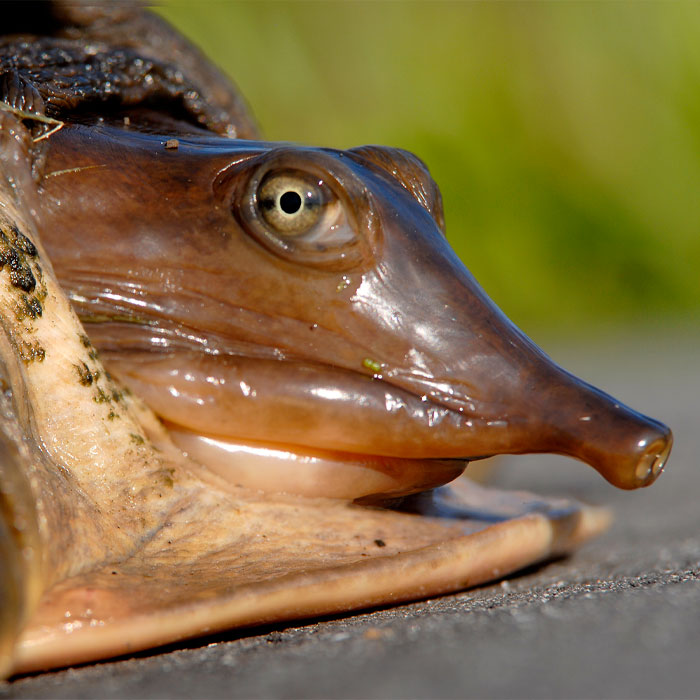
7. The better to see you with my dear.
Some, namely soft-shelled turtles, have eyes near the tops of their heads. But most have downward-facing eyes so they can see what they are encountering on the ground. Their eyesight is quite keen.
8. Smarter than your average rat.
It may be true that the tortoise outsmarted the hare given that the turtle beats white rats in learning how to manoeuvre mazes!
9. Want a girl or a boy?
If you are a turtle (or a breeder) choosing the sex of your brood is a simple matter of temperature control. Higher hatching temperatures will produce females. Cooler temperatures produce males. You might want to breed some females, as 25 species are on the endangered list and 40 more are on watch. Apparently, they are threatened by the proliferation of raccoons and skunks, both on the rise in populated areas where the living is easy. They love to eat turtle eggs.
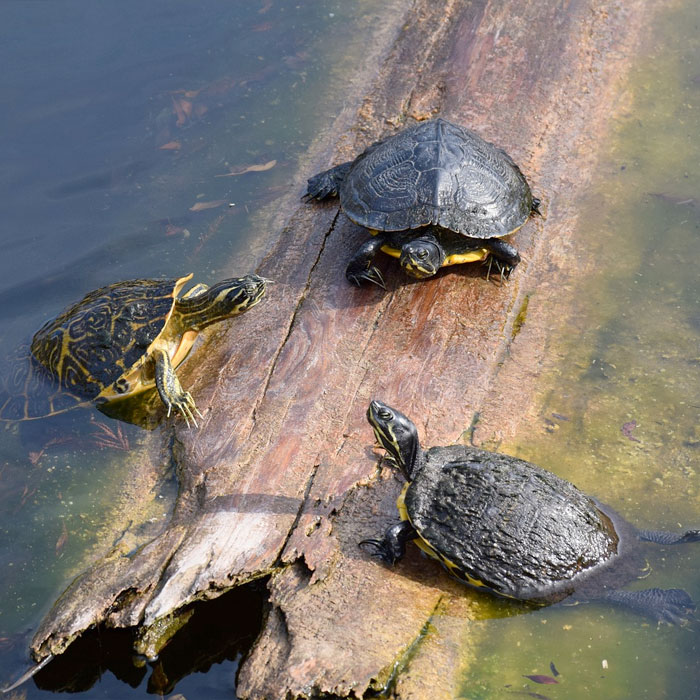
10. Turtle? Tortoise? Terrapin?
Generally, all of the above are considered turtles. Tortoises are mainly land-dwelling creatures and non-tortoise turtles are water dwellers. In England, terrapin is the name given to a freshwater turtle to distinguish it from a sea dweller.
– Dorothy Dobbie Copyright©
Pegasus Publications Inc







Pingback: The Gardener Show Sept 1 - Canada's LOCAL Gardener magazine